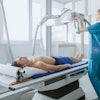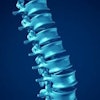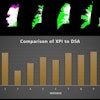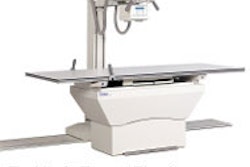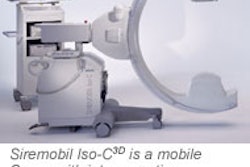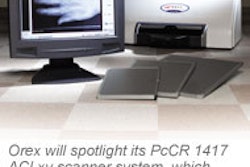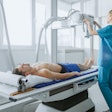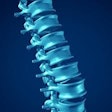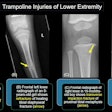(Radiology Review) Dr. Hiromasa Miura and colleagues at Kyushu University in Fukuoka, Japan, have developed an oblique posterior radiographic view of the femoral condyles to better demonstrate this aspect of the knee following total knee arthroplasty.
"Following total knee arthroplasty, it is often difficult to evaluate the posterior aspects of the femoral condyles on a true-lateral radiograph," according to their article in the Journal of Bone and Joint Surgery. The radio-opaque prosthesis obscured the posterior condyles in this view. Also, they reported that when an abnormality was found on a true-lateral view deciding whether the medial or lateral posterior condyle was affected was difficult.
"The oblique posterior condylar view is obtained with the patient sitting, with the knee flexed to 90V and the foot resting on a stool," they described.
Using a horizontal beam, two oblique views of the knee were taken. The obliquity of angle was dependent on the type of prosthesis, and the authors suggested using fluoroscopy initially to determine the optimal angle. For this study an angle between 45°- 50° was used.
They studied 55 knees in 41 patients. Both oblique posterior condylar and true-lateral radiographs were taken for all knees and an evaluation of abnormalities was performed. Abnormal findings included "radiolucent lines with a thickness of >1mm or osteolysis of the posterior aspects of the femoral condyles."
Three orthopedic surgeons independently found abnormalities on the oblique posterior view that were not apparent on the lateral view in more than half the patients (25/39, 25/36, and 21/33).
"Almost all abnormalities detected on the lateral view were confirmed on the oblique posterior view." There was excellent intraobserver and interobserver agreement for both views.
According to the group, "a standard lateral radiograph cannot reliably demonstrate the presence of radiolunencies of the posterior aspects of the femoral condyles following total knee arthroplasty because rotation of the radiographic beam by only a few degrees may fail to reveal a radiolucency adjacent to the component."
The oblique posterior femoral condylar radiographic view following total knee arthroplastyMiura, Hiromasa, et. al.
Department of orthopaedic surgery, Graduate School of Medical Sciences, Kyushu University, Fukuoka, Japan
Journal of Bone and Joint Surgery 2004 January; 86:47-51
By Radiology Review
March 26, 2004
Copyright © 2004 AuntMinnie.com
